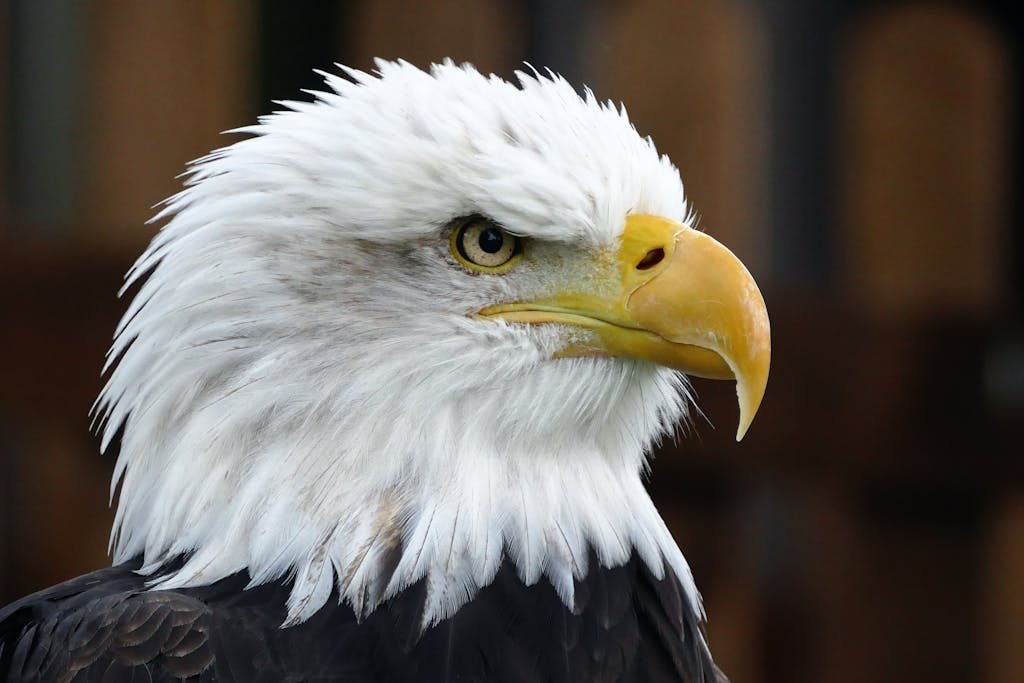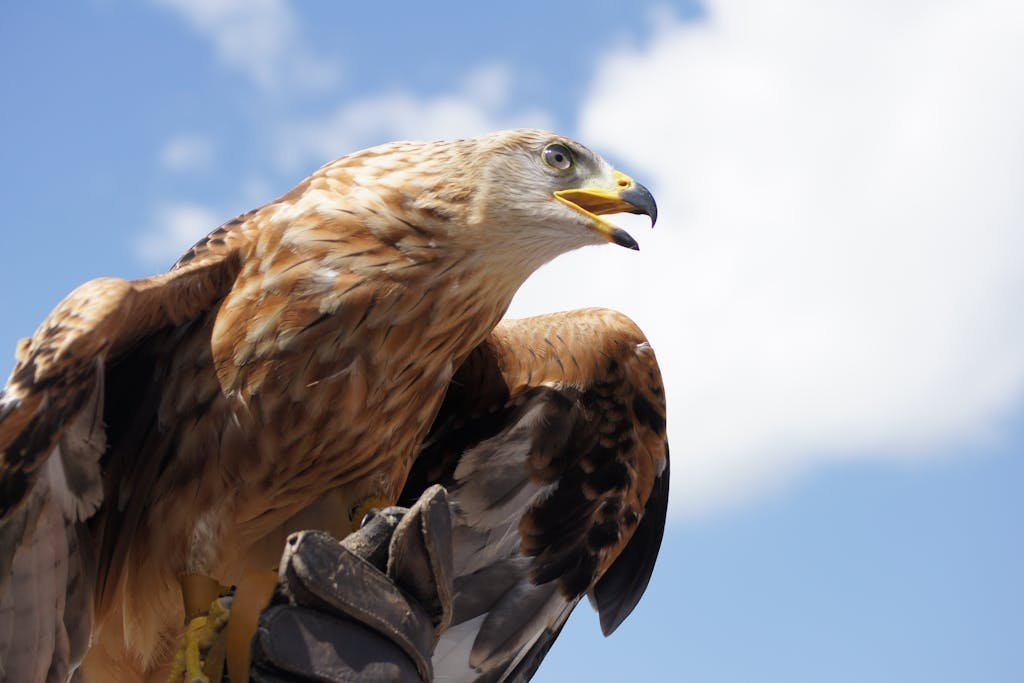Types of Eagles in Texas: An In-Depth Guide for Enthusiasts
Eagles hold a special place in Texas, known for their impressive strength, sharp vision, and majestic presence. While there are over 60 species of eagles worldwide, Texas is home primarily to two—the Bald Eagle and the Golden Eagle. Each of these species plays a crucial role in Texas’s ecosystems, helping to maintain balance and contributing to biodiversity. Below, I’ll take you through everything you need to know about these eagles, from their appearance and habitats to their diet and current status.
Let’s explore these iconic Texas raptors in depth to provide you with a comprehensive understanding.
Bald Eagle (Haliaeetus leucocephalus)

Appearance
The Bald Eagle is one of North America’s most easily recognizable birds of prey. While it doesn’t have a bald head, its distinctive white head and tail feathers contrast beautifully against a dark brown body and wings. Its piercing yellow eyes and hooked yellow beak add to its unique, fierce appearance, making it a powerful symbol of freedom and resilience.
- Head and Tail: Bright white feathers stand out against dark body plumage.
- Body and Wings: Dark brown with slight variations in feather tones.
- Eyes and Beak: Yellow, with a thick and slightly hooked beak, is ideal for tearing into prey.
Size
Bald Eagles are large, powerful birds with impressive wingspans:
- Wingspan: Ranges from 6 to 8 feet.
- Body Length: Typically between 28 and 40 inches.
- Weight: Females, usually larger than males, can weigh up to 14 pounds, while males typically weigh between 8 to 10 pounds.
This size difference, known as sexual dimorphism, is common among raptors, with females being larger to help with egg incubation and hunting needs.
Habitat
In Texas, Bald Eagles are found near water bodies, where they can hunt their preferred prey—fish. They inhabit areas like:
- Lakes: Freshwater sources provide abundant fish populations.
- Rivers: Rivers attract Bald Eagles due to consistent access to fish and other prey.
- Coastlines: Eagles along the Texas coast feed on fish, and waterfowl, and occasionally scavenge from the shore.
- Wetlands and Marshes: These areas attract a variety of prey, including fish, reptiles, and water birds.
During the winter months, Bald Eagles also migrate to Texas from northern states, finding sanctuary in its milder climate and diverse ecosystems.
Diet
Bald Eagles are primarily piscivorous (fish-eating) birds, but their diet can be quite varied depending on food availability. Their main food sources include:
- Fish: Catfish, trout, and other freshwater fish make up the bulk of their diet.
- Waterfowl: Bald Eagles will hunt ducks, geese, and other water birds.
- Small Mammals: Rabbits, rodents, and occasionally young deer fawns.
- Carrion: They will scavenge on dead animals, especially in winter months when other food sources are scarce.
These adaptable raptors often hunt by swooping down over water, grabbing prey with their talons. Their exceptional vision allows them to spot fish from hundreds of feet away.
Status
The Bald Eagle faced critical population declines in the 20th century due to habitat destruction, hunting, and pesticide use (particularly DDT). Listed as endangered in the 1970s, a dedicated conservation effort led to its remarkable recovery:
- Population Growth: Through reintroduction programs, the banning of DDT, and stricter wildlife protection laws, the Bald Eagle population has rebounded.
- Current Status: It’s no longer on the endangered species list, though it is still protected under the Bald and Golden Eagle Protection Act.
Today, Texas is proud to be a winter home for many Bald Eagles, offering plenty of roosting and nesting grounds for these awe-inspiring birds.
Golden Eagle (Aquila chrysaetos)

Appearance
Golden Eagles are known for their striking golden-brown plumage, which gives them their name. Unlike Bald Eagles, Golden Eagles don’t have distinct white head feathers but feature an overall darker coloring:
- Head and Neck: Slight golden hue, especially noticeable around the nape.
- Body and Wings: Dark brown, with a slightly mottled appearance.
- Eyes and Beak: Darker eyes and a powerful hooked beak that allows them to handle tougher prey.
Their powerful build and sharp talons make them well-equipped for tackling larger prey than the Bald Eagle can handle.
Size
Golden Eagles are slightly smaller than Bald Eagles but still boast a formidable wingspan and body size:
- Wingspan: Typically between 6 to 7 feet.
- Body Length: Around 26 to 40 inches.
- Weight: Generally 6 to 13 pounds, with females again being larger than males.
This size and agility enable Golden Eagles to hunt larger, faster prey over open landscapes.
Habitat
Golden Eagles prefer open terrain and mountainous regions over wetlands and rivers. In Texas, they can be found in areas such as:
- Prairies and Grasslands: Ideal for hunting small to medium-sized mammals.
- Desert Landscapes: Golden Eagles are well-suited to the dry, arid regions of west Texas.
- Mountain Ranges: Higher elevations in Texas provide suitable nesting sites and hunting grounds.
- Isolated Canyons and Cliff Edges: These rugged areas give them the advantage of height, crucial for hunting and nesting.
Unlike the Bald Eagle, Golden Eagles avoid densely forested areas and water bodies, choosing instead to soar over open landscapes where they can spot prey with ease.
Diet
Golden Eagles are versatile hunters, and they primarily hunt mammals:
- Small to Medium Mammals: Their diet includes rabbits, hares, and ground squirrels.
- Larger Mammals: They’re capable of taking down animals as large as coyotes, foxes, and young deer.
- Occasional Birds and Reptiles: Depending on what’s available, Golden Eagles may also hunt birds like grouse and reptiles.
Golden Eagles use their speed, agility, and incredible vision to swoop down on their prey, often in dramatic aerial pursuits.
Read Also: Beyond the River Walk: 15 Top-Rated San Antonio Neighborhoods
Final Thoughts
The presence of eagles in Texas is a testament to the state’s rich and varied wildlife. Whether soaring over lakes, patrolling prairies, or nesting high in cliffs, both Bald and Golden Eagles contribute to the natural beauty and ecological stability of Texas. Their stories of survival and resilience, especially that of the Bald Eagle, inspire conservationists and nature lovers alike.






